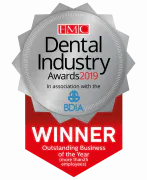Portman Dental Care Awards






Your temporomandibular joint is the hinge that connects your jaw to your skull – it is this joint that enables the movement of your jaw up and down and left and right, to allow for chewing, yawning and talking. Any problems that occur with this particular part of the skull are given the name temporomandibular disorders (TMD). These are also sometimes called TMJ dysfunction, referring to temporomandibular joint.
Pain in this part of your jaw is particularly common. Around 30 percent of adults will experience it at some point in their lifetimes, and usually it will go away of its own accord.
For those who suddenly develop pain in this area, it is difficult to determine the cause. Usually the symptoms of TMD are short-lived, and in most cases any pain will disappear of its own accord. TMD can be caused by bruxism (clenching and grinding of the the teeth and jaw) or an uneven bite. Wear and tear to the internal joint can cause pain and irritation, and you may even find that you are holding tension in your jaw due to stress. Sometimes TMD may be easily identifiable as the direct result of an injury, such as following surgery or an external blow to the jaw, or a specific disease such as arthritis, gout or fibromyalgia.
You dentist will feel your jaw as you open and close it to assess the range of movement. They may press on the sides of you face and cheek to check for any pain when pressure is applied. Following this an x-ray or CT scan may be required to provide a comprehensive view of your entire jaw and teeth, and to see if there is any visible damage.
Should you be experiencing irritation from TMD, there are a number of adaptations you can make to make your life more comfortable until the pain subsides.
Your Terrace Dental Care dentist will discuss your concerns and history of TMD. Should you come to us with persistent pain, they may offer you one of a range of options to tackle the problem.
Mouthguards can sometimes be made up specially to fit your mouth, in order to take the pressure away from any biting or grinding. If this is causing the problem, relieving the tension may help diminish the pain.
Painkillers such as ibuprofen, codeine or paracetamol can also help with the immediate pain. Your dentist may prescribe a stronger painkiller depending on your situation, this could be a muscle relaxant or an antidepressant. If arthritis is the culprit, then your dentist may suggest a steroid injection to help to reduce the swelling. In some cases, one injection can solve the problem completely.
At the Terrace Dental Care we offer several effective treatments for TMD:
Your dentist will carry out a thorough examination, form a diagnosis, and will recommend a suitable course of action for you which may involve one or more of the above treatments. There is no single treatment method for TMD and therefore we find a combination approach, tailored to individual needs, is the most effective.
Acupuncture Acupuncture is often used to give initial pain relief as it helps to relax painful muscles. It usually takes two to four sessions, several weeks apart, to resolve symptoms.
Physiotherapy Physiotherapy aims to relieve pain, reduce stiffness and restore normal function and mobility.
Anett, our physiotherapist, will first assess your individual needs and will formulate and present a plan of action prior to treating you. On average it can take 4 to 6 sessions to treat TMD.
Anett’s approach to treatment is patient focused and is keen to ensure that you have an understanding of the causes of your TMD condition. She believes successful treatment involves self-management of your condition in the long term.
Anett is specially trained in techniques to reduce tension in your jaw muscles. She will show you appropriate exercises and self-massage which will help maintain the mobility of your jaw joints and increase the strength, condition and flexibility of your muscles. Providing you with knowledge and support to enable long term management of TMD.
Splint Therapy A splint is a hard plastic guard that fits over either the upper or the lower teeth. It is designed to move the jaw into a relaxed muscle position whilst being worn. This is a non-invasive procedure that allows muscles in spasm to relax and protects the teeth and jaws from the adverse effects of grinding. Splints can also be effective at reducing headaches.
Splint Therapy treatment usually involves a session to take moulds of your mouth and some measurements. Then, after a few weeks, your dentist will fit and adjust the splint, providing you with instructions on how to look after it. A month or so after fitting the splint, we recommend a follow-up appointment to check it is comfortable and if necessary carry out any further adjustments.
Portman Dental Care Awards





